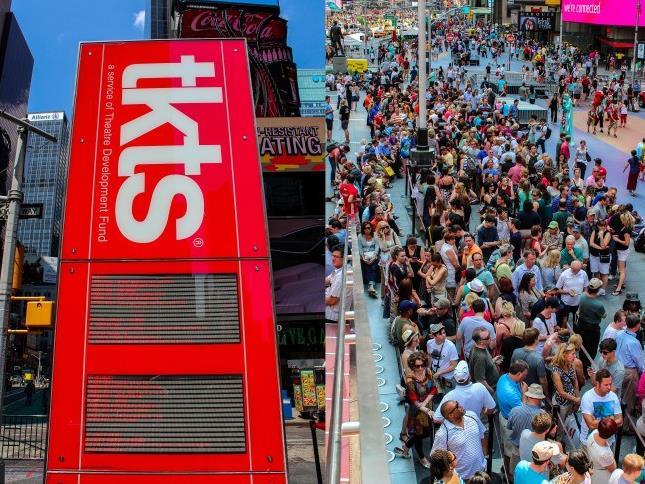The Broadway same day half-price tkts booth is an international institution but discounting is risky for producers. Image: adventuresinculture
Special offers are often used in the arts as a last-minute measure to push attendance. The fear of an empty house, however, can send box office teams into a nervous frenzy of discounting.
Using offers without a strategy conditions audiences to hold off on buying tickets until the last minute. What you gain in volume on nights where demand seems weak, you lose in margin. The fire-sale approach to pricing also risks devaluing customer perceptions of quality.
Discounting in the arts requires careful thought to make sure it’s both filling seats and sending the right messages, growing both audiences and the bottom line.
Intelligent discounting
As our 2014 Aggregate Data Report confirmed, almost half of an organisation’s ticket revenue is generated by customers who attend two or more times in a year. Add to this the well-known fact that engaging customers already known to you comes at a lower cost than attracting new customers, and reattendance becomes very important.
Special offers can be used to encourage one-time or casual visitors to become more regular attendees. This can be done through multibuys, which give a greater discount the more events in the basket.
To really be effective, multibuy offers should be simple and percentage-based. For example, allowing customers to save 10 per cent with two events in the basket, 15 per cent with three events and so on.
The online purchase path should clearly show customers how to spend more and save, and make it clear the value of the saving throughout the purchase path.
Aside from ticket sales, offers can also be used to increase secondary spend: upsell event programmes, interval drinks or ice cream vouchers.
Offers can also change when customers choose to book. Rather than letting last-minute discounts sound a warning alarm to customers on the quality of an event, early bird discounts can turn late bookers into advanced bookers.
Consider limiting the offer (e.g. up to $x worth of discounts in total) on an early bird scheme: and budget this as ‘spend’ alongside your normal marketing activity. Compare this cost to what you may save in either later discounts or last-minute marketing campaigns, and see if advanced booking discounts are right for your audience.
Mixing offers and membership schemes
If you have a Membership or Friends’ Scheme that offers discounts on tickets, carefully track how much you’re giving away to these customers and what your return is. Speak to your software provider about the best way to do this, but at a minimum there needs to be a way of adding up how much you’re giving away across a membership period.
Combine this with the costs of administering your scheme and add up your total income from membership. If the return isn’t looking healthy: look at increasing subscription costs, or review the discount you’re giving away.
Smart, proactive offers can be used to change customer’s behaviour and their long-term booking habits: not just to shift those seats to quieter performances. Whatever the aims of your offers, set goals for their impact on your customers’ behaviour, whether that’s reattendance, average spend or booking patterns and make sure you measure these as part of your regular key performance indicators.
If a customer leaves your website having only purchased what they originally intended to buy, it’s a lost opportunity. Every page of your website purchase path needs to be encouraging customers to spend more money. Smart offers are a great way of doing that.
This article was first published on International Arts Manager.




